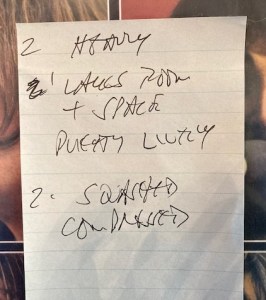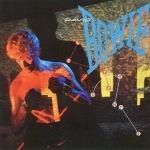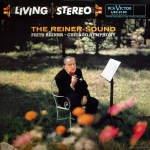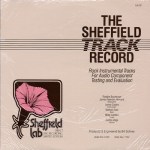More of the Music of The Beatles
More Reviews and Commentaries for Let It Be
At the end of a shootout for Let It Be back in June of 2014, we decided to see how the 2012 Digitally Remastered Heavy Vinyl pressing would hold up against the 12 (yes, twelve!) British copies we had just critically auditioned.
Having evaluated the two best copies on side two, we felt we knew exactly what separated the killer copies (White Hot) from the next tier down (Super Hot). Armed with just how good the recording could sound fresh in our minds, we threw on the new pressing. We worked on the VTA adjustment for the thicker record for a couple of minutes to get the sound balanced and as hi-rez as possible, and after a few waves of the Talisman we were soon hearing the grungy guitar intro of I’ve Got a Feeling.
My scribbled first notes: not bad! Sure, there’s only a fraction of the space and three-dimensionality of the real British pressings, but the bass seemed to be there, the energy seemed decent enough, the tonality was good if a bit smooth and dark — all in all not a bad Beatles record.
Then we played One After 909 and the sound just went off a cliff. It was so compressed! The parts of the song that get loud on the regular pressings never get loud on the new one. The live-in-the-studio Beatles’ rock energy just disappeared.
We couldn’t take more than a minute or two of the song, it was that frustrating and irritating. What the hell did they do to make this record sound this way? We had no idea.
Didn’t matter. It was game over. The gong from The Gong Show had rung. The record had to go.
We had played twelve British copies, all with stampers that we knew to be good on side two. Two or three of those copies did not merit a Hot Stamper sonic grade. Nothing new there, happens all the time.
Yet even the worst copy we played of the twelve had more jump-factor, more life and more dynamic energy than the new Heavy Vinyl pressing.
Which means that there’s a very good chance that any copy you pick up on British vinyl will be better sounding — maybe not a 100% chance but easily a 90+% chance. Which makes buying the new Heavy Vinyl LP — not to mention playing it — entirely pointless.
Heavy Vinyl Shortcomings
As a general rule, a Heavy Vinyl pressing will fall short in some or all of the following areas when played head to head against the vintage pressings we offer. (Our Hot Stampers are the same ones, of course, that you can find for yourself, aided by the improved critical listening skills you will acquire from the practice. This assumes you have what is required (the records, the cleaning equipment, the time, etc.) and are willing to do the work.)
- It will tend to lack Ambience, Size and Space.
- It will tend to have more Compression.
- It will tend to lack Energy.
- It will tend to lack Transparency.
More Heavy Vinyl Reviews
Here are some of our reviews and commentaries concerning the many Heavy Vinyl pressings we’ve played over the years, well over 200 at this stage of the game. Feel free to pick your poison.
There are many kinds of audiophile pressings — Half-Speeds, Direct-to-Discs, Heavy Vinyl Remasters, Japanese Pressings, the list of records offered to the audiophile with supposedly superior sound quality is endless. Having been in the audiophile record biz for more than thirty years, it has been our misfortune to have played them by the hundreds,
How did we find so many bad sounding records? The same way we find so many good sounding ones. We included them in our shootouts, comparing them head to head with our best Hot Stamper Pressings..
When you can hear them that way, up against an actual good record, their flaws become that much more obvious and, frankly, that much more inexcusable.
Back to 2000
Even as recently as the early 2000s, we were often impressed with many of the better Heavy Vinyl pressings. If we’d never made the progress we’ve worked so hard to make over the course of the last twenty or more years, perhaps we would find more merit in the Heavy Vinyl reissues so many audiophiles seem impressed by.
We’ll never know of course; that’s a bell that can be unrung. We did the work, we can’t undo it, and the system that resulted from it is merciless in revealing the truth — that these newer pressings are second-rate at best and much more often than not third-rate or worse.
When I say worse, I know whereof I speak. Some audiophile records have pissed me off so badly I was motivated to create a special ring of hell for them.
Setting higher standards — no, being able to set higher standards — in our minds is a clear mark of progress. Judging by the hundreds of letters we’ve received, especially the ones comparing our records to their Heavy Vinyl and Half-Speed Mastered counterparts, we know that our customers see things the same way.










